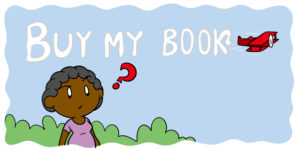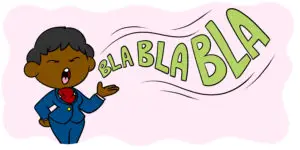There’s never been a time where authors had more control of their own work than they do now. The popularity and ease-of-use afforded by digital and social media mean that authors can tackle as much of the publishing and marketing of their work as they feel they can handle.
Whether you’re a self-published author or working with a traditional publisher, you’ll always be able to take a hand in marketing your work. In the past we’ve covered marketing tools such as giveaways, book trailers and promotional services. These are all great devices for marketing a single book, but in this article I’ll be discussing the mother of them all.
The email list
The email list is perhaps the only form of evergreen marketing. That is, unlike single advertisements, you can use the same list for every book you write. It’s certainly one of the most effective types of marketing available to authors.
Every author should have a social media presence. No matter how minor or ill-kempt, at the very least every author needs to have an official online presence. With that understood, a healthy email list is still more important.
What is an email list?
The clue’s in the name: an email list is a list of email addresses. More precisely it’s a list of people who want to know what you’re up to as an author.
Those last three words are very important. An email list is a marketing tool designed to inform potential customers or supporters about events, products or developments which are likely to interest them.
The rise of social media has made emails even more formal than they once were, so although email lists are effective they should be used sparingly. Unlike Twitter, Facebook, Pinterest or other social media marketing tools, each individual piece of content shared through an email list should be seen as an advert in its own right. In the same way you wouldn’t send someone twenty leaflets on the same topic, email lists should be used for your most important pieces of news.
How do they work?
The intention when using your email list is to send out professional adverts for your work, or to share desirable content and invite readers to associate your name with quality and enjoyment.
At their most basic level, email lists allow you to tell potential readers when you have a book out. Other benefits for savvy users include building anticipation for a release and turning readers into fans. Readers might buy your books when they see that they’re out: fans seek out release dates.
It’s much easier for people to transition from readers to fans when that extra information is waiting in their inbox.
Emails are direct communication. Even though your recipients know they’re part of a list, there’s still the sense that you took the time to contact your readers directly. Checking your emails and seeing a message from an author you enjoy is thrilling, and that makes you more receptive to the content of the message.
So messages sent using email lists are effective, but that’s only half of why they’re vital.
Why are they so important?
There are lots of ways to contact readers. Blogs are often happy to provide reviews or interviews, promotional services will advertise your book in their subscription emails, and Amazon and Kindle will do the same under certain circumstances. If you’re with a publishing house they might include your work in emails to contacts.
The problem with all these methods is two-fold.
- You’re communicating with your readers through a middle-man.
Email lists work so well because readers are getting direct messages from authors they like. To people who enjoy their work all authors are granted a measure of celebrity, and it’s fun getting a direct message from a celebrity.
Conversely, when you receive a message from Amazon you know you’re on a database somewhere, and are less open to the contents of the message.
- Your contact with your readers is dependent on another relationship.
Say you switch publishers, stores or even decide to alter your social media. What if you decide to set up a new website, or want people to like a new Facebook page? Email addresses tend to stay the same, providing you with the most long-lasting link to your fan base.
Similarly, third parties don’t want to send messages on your behalf just for the fun of it. There’s usually a condition or price for third party messages, and even then they don’t focus exclusively on you.
Messages sent using an email list render readers more susceptible to the content and focus exclusively on your work. There’s no other marketing tool more dedicated to your success or more effective in communicating with your readers.
How do you build an email list?
There are a variety of ways to build an email list, but they all boil down to giving people a reason to sign up. This can be as simple as the information you’re offering, and a simple (but prominent) ‘for updates on upcoming projects, appearances and more sign up to my reading list’ on your website and social media should attract a respectable number of addresses.
As an example, we email every one of our subscribers on the day that a new article is published, that means you never miss out on useful information like this article that you’re reading right now. If you aren’t already signed up then I suggest that you do so.
Make sure this message is present wherever you can fit it in (like I just did in the previous sentence). This might mean starting with third party communication, and it should certainly be a front and centre message if you’re guest-posting or taking part in an interview with a blog.
When you publish a book you should always include a link to your email signup form as the first thing at the end of your book. You can do this in both print books and ebooks. Most email providers will provide you with a short URL that you can use which would definitely fit in the back of a book. You could also use a link shortening service such as Bitly to create an easy to read URL.
Any reader who has just finished your book is very likely to sign up to hear more from you.
Of course you can offer a little more than information, and my next article will focus on the kind of incentives that attract subscribers en masse.
Multiple email lists
Depending on the time you’re prepared to put into lists, you could run more than one. Having a list of reviewers or influential personalities is always a good idea, and you could even allow readers to subscribe to different frequencies of contact – ‘just new releases’, ‘releases and appearances’, and ‘all content’ are sensible groupings.
If you can foresee a situation where you’ll want to pick out a certain group for a particular kind of message then organize separate lists from the start. It’s much easier to begin by creating different lists you may need in the future than it is to organize pre-existing contacts into a new group later on.
Get started!
People rarely change email addresses, so it’s never too early to start building your email list. Take every opportunity to collect email addresses of people who might be interested in your work.
The internet is littered with forums on all sorts of topics. It doesn’t take much to visit a few, outline your themes and intentions, and ask if anyone wants to be notified when you release. You might be scared that no-one will reply, but if you get even one address then that’s someone you can advertise every new book release to for the rest of your career.
Mailchimp and Aweber are two excellent email service providers which we recommend to our authors and if you are looking for amazing marketing automation on top of just basic mass emails then I’d recommend checking out ActiveCampaign, which is what we use to supercharge our email marketing (the lite plan starts at $9 per month).
Have you found email lists useful or do you think something else works better? Either way, I’d love to hear from you in the comments.






1 thought on “Why You Need To Have An Email List Right Now”
Good article.
For my email list, I use Mailchimp.
The last part of this article is important, too: segmentation. Various lists for different targets make the difference. Of course, you need a big audience, first.